Click on a headline below to read stories from Arkansas Catholic's special 33-part series on history mined from the first 100 years of Arkansas Catholic and its predecessors.
On March 25, 2011,the Arkansas Catholic celebrated A century of faith in news. Thanks to donors in Arkansas Catholic's Guardian Angels campaign, the entire year of issues from 1911 was preserved in time for the anniversary. As donations come in, additional years are being scanned and indexed. Click here to see searchable digital archives of The Guardian for 1911-1926 and 1945.

The Diocese of Little Rock gained a new shepherd during 2008 when Father Anthony B. Taylor of Oklahoma City was named bishop for the state.
The diocese saw a policy change the Dec. 5, 2009, issue reported in "Weekday Communion services discontinued." Six parishes were affected by the change, which was necessary to comply with a Vatican document.
Two former bishops of Little Rock celebrated milestones during this time. Retired Bishop Andrew J. McDonald celebrated his 60th More... 
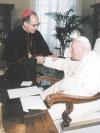
Arkansas Catholics mourned the loss of a pope and their bishop, while extending a welcome to hurricane refugees.
The years of 2004-2007 saw many changes in the world and at home that were reported in Arkansas Catholic.
Arkansans also coped with the reality of war in Iraq, the Church sexual abuse crisis and the excommunication of six nuns in the diocese.
In what was "believed to be the first time anyone in the Diocese of Little Rock" was More... 

The biggest story of 2002 was the clergy sexual abuse scandal.
In January 2002 a defrocked Boston priest was convicted of indecent assault, but was accused of hundreds of other cases of abuse. Cardinal Bernard F. Law resigned amid allegations his diocese mishandled charges against abusive priests. Nearly 140 lawsuits were filed in Boston alone.
In March 2002, Bishop J. Peter Sartain issued a pastoral letter on clergy sexual abuse, which was read at all More... 
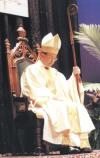
The Diocese of Little Rock experienced more transitions in 1998 to 2000.
In 1998 Bishop Andrew J. McDonald celebrated two milestones as a bishop and priest. In May he marked his 50th anniversary as a priest. A special issue of Arkansas Catholic was published to look back at the bishop's ministry in Georgia and Arkansas.
Bishop McDonald also hosted a golden anniversary Mass and reception at the Cathedral of St. Andrew in Little Rock for More... 
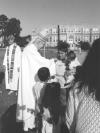
The Diocese of Little Rock continued to embrace diversity and spirituality in 1995-1997 by serving refugees, the burgeoning Hispanic population and the growing number of Catholics in the state.
The number of Catholics rose in the state to 85,992, Arkansas Catholic reported Feb. 1, 1997, a 2-percent increase over 1995 and an 11.5-percent increase over 1992.
The diocese continued to work with refugees, as the "only sanctioned refugee organization in state." A March 1, 1995, article reported More... 

The Diocese of Little Rock passed a milestone in its history as it turned 150 in 1993, and it looked to stop the growing number of Hispanics leaving the Church.
Catholics in Arkansas continued to work on faith and justice issues, whether it was helping the needy through organizations like Helping Hand or the Westside Free Medical Clinic, developing the ecumenical prison ministry KAIROS in the state or working with migrants to become U.S. citizens.
Girls in More... 

The growing diversity of Arkansas Catholics posed challenges in bringing Catholics together for worship in 1989-1991 and how to prevent discrimination in the state.
The Diocese of Little Rock reached out with ministries to various groups, and offered programs like "Arise" to educate the "unchurched" about the faith.
In 1989, Karl Christ retired as editor of Arkansas Catholic. Deb Halter, the newspaper's first female editor, joined the staff.
The Church is all of us
The diversity of Catholics in More... 
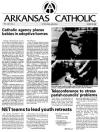
Arkansas Catholics worked on spirituality, life and social justice issues in their parishes in a time that also saw the debut of Arkansas Catholic.
The diocese also continued to participate in the RENEW program and the Little Rock Scripture Study programs, as a way to deepen and enrich the faith of Catholics in Arkansas.
The diocese also participated in healing services lead by Father Ralph A. DiOrio of the Diocese of Worcester, Mass. in 1986. In the More... 

Peace and justice issues came to the forefront in 1983 to 1985.
In the May 6, 1983, issue, under the headline "Nuclear arms condemned," the U.S. bishops approved the pastoral called "The Challenge of Peace: God's Promise and Our Response," which was hailed a milestone in the Church.
"Imminent deployment of U.S. cruise and Pershing II nuclear missiles in Europe" made the pastoral a timely topic for the Church to speak about and study. The bishops noted More... 
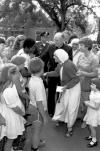
Cuban refugees living at Fort Chaffee, the visit of Mother Teresa, the diocese's first diaconate ordination and the growth of Little Rock Scripture Study were highlights from the early 1980s.
Refugees in Arkansas
On May 6, 1980, Fort Chaffee outside Fort Smith became a Cuban refugee resettlement center after the Cuban government allowed American boats to pick up refugees in Mariel Harbor. (In two years, Fort Chaffee processed 25,390 Cuban refugees.)
Under the headline, "Diocese helping refugees" in More... 
Pro-life issues continued to be highlighted on the pages of The Guardian in 1977 and 1978.
Bishop Andrew J. McDonald requested Birthright be chartered in Little Rock to serve pregnant women in crisis pregnancies. Birthright was established in Paris in 1975, but the bishop wanted those who were considering abortions to have an alternative in central Arkansas. The Paris center was founded by Bob Cowie, who is now a deacon, and his wife, Betty.
"Pro-life issues More... 
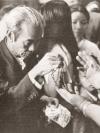
Arkansas Catholics opened their hearts to Vietnamese refugees at Fort Chaffee, imitating the pope's call for peace through supporting life.
Bishop Andrew J. McDonald called Arkansans to support the poor, the unborn and the refugees during 1974-1976.
In the Dec. 24, 1976, issue of The Guardian, the pope continued his calls for peace in preparation for the annual World Day of Peace. "'If you want peace, defend life,' Pope Paul advises; laity, justice agencies bolstered."
The Catholic population More... 

The tragedy of abortion took center stage during 1971-1973, while Arkansas Catholics received a new leader to guide them.
The pope rang in 1971 with his continued calls for peace. "Pope Paul declares Christian faith is key to brotherhood, world peace," the headline for Jan. 1, 1971, read.
Catholics around the world were encouraged to give "alms" to alleviate the poverty and struggles of the Latin American people.
A mainstay in Arkansas' connection to missions in Latin America, More... 

Peace, violence, birth control, abortion and a changing society were news of the day for Arkansas Catholics between 1968 and 1970.
The Diocese of Little Rock celebrated some milestones, including Bishop Albert L. Fletcher's golden jubilee.
A second native Arkansan rose to the hierarchy in the Church. Msgr. Lawrence P. Graves was ordained auxiliary bishop for the Diocese of Little Rock to assist Bishop Fletcher. Msgr. Graves was with Bishop Fletcher throughout the Second Vatican Council.
Organizations continued More... 
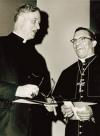
The focus of the world on modernity took center stage in the 1965-1967 issues of The Guardian with closing of the Second Vatican Council and Pope Paul VI's call for peace and morality.
Bishop Albert L. Fletcher and those in the diocese continued work for peace as Pope Paul VI requested of the Church at large, including promoting race relations, ecumenism and interfaith dialogue.
Father John O'Donnell, then-assistant pastor at Our Lady of the Holy Souls More... 

The Second Vatican Council captivated top coverage before it convened in 1962 and throughout the three sessions held during 1962-64.
Leading up to the council, The Guardian ran a 12-part series discussing issues facing the council -- excerpts from the book, "The Ecumenical Council: Church and Christendom," by German Archbishop Lorenz Jaegar. The series looked at topics the council would cover, including papal infallibility, unity of the Church, assistance of the Holy Spirit, Protestants and the More... 

Following the 1957 crisis at Central High School in Little Rock, race relations continued to be a topic of articles and editorials in The Guardian.
At midnight Mass on Christmas in 1958 at the Cathedral of St. Andrew, Bishop Albert L. Fletcher said the race relations issue lies "in our own souls."
Discussing peace around the world, he said, "We do not have to go to other parts of the world to find this lack of More... 

The Guardian began to take on a more modern feel in the 1950s. Many news photos filled the pages as well as columns by well-known figures like Msgr. Fulton J. Sheen.
In 1953 Bishop Albert L. Fletcher instituted a plan to print and mail 10,000 copies of The Guardian, reaching every home, meaning 4,000 to 5,000 extra homes would receive the paper each week.
In 1953 The Guardian's bookstore was featured prominently in the newspaper each week, More... 
Bishop Fletcher and 17 Arkansans made a pilgrimage to Rome in June and July 1950 for the Holy Year. They also were able to witness the canonization of Blessed Maria Goretti, the 11-year-old "virgin and martyr of the century" who died in 1902.
Bishop Fletcher met the pope and was among eight American bishops who took part in the procession into St. Peter's Basilica.
The group, including the bishop, six priests and 11 laypeople, sailed from More... 

Bishop Albert Louis Fletcher was installed as the bishop of Little Rock on Feb. 11, 1947, four months following the death of longtime bishop John B. Morris.
While Bishop Fletcher was ordained to the episcopacy and installed as an auxiliary bishop in 1940, it wasn't until the formal ceremony in 1947 that the diocese officially had its fourth bishop.
The Pontifical Ceremony of Installation before 40 archbishops and bishops was held at the Cathedral of St. More... 
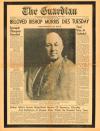
One of the major events in the history of the diocese occurred in 1946 when Bishop John Baptist Morris, founder of The Southern Guardian, Catholic High School and St. John Seminary, died after serving Arkansas for 40 years. He was 80 years old.
Then for the first time in diocesan history, Pope Pius XII named an Arkansas native to lead the Diocese of Little Rock. Former Auxiliary Bishop Albert Fletcher was named the new bishop.
The More... 
The years of 1941-1943 saw war coverage dominate The Guardian with first the European war and then Japan's attack on America.
The coverage was constant, but it was not your typical news reports of battles. The coverage focused on the Catholic side of things before and after America declared war on Japan -- detailing the work of chaplains, missionaries and later heroisms of Catholic soldiers.
While the war was a mainstay, so were the lives and continuing More... 
Catholics in Arkansas during 1938-1940 continued to grow their communities and work among their Protestant neighbors, all the while Europe again careened into war.
Churches continued to be built and dedicated, including St. Anne "shrine" in Levy, an area now part of North Little Rock, St. Richard Church in Bald Knob, Our Lady of the Lake Church in Lake Village, Sacred Heart Church in Foreman and St. Gabriel Church for the Colored in Hot Springs. Land More... 
Arkansans saw a growing church and less discrimination in 1935-1937, but The Guardian continued to report that overseas trouble was brewing for Catholics and the Church.
The paper saw the leadership of two editors during 1935-1937. Father Harold Heagney led the paper until July 18, 1936. The Guardian did not report on his departure; instead the masthead did not list an editor until Sept. 26, 1936. The Sept. 26 issue announced the appointment of the new More... 
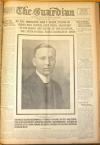
Marriage, divorce and birth control were common subjects of stories in The Guardian in 1932 to 1934.
During those times the Church could not imagine Catholics marrying someone who is not Catholic, getting divorced and using birth control to limit the number of children. One headline reported, "One wedding in six to end in divorce, U.S. survey shows."
In 1932 the evil of birth control was repeatedly mentioned in news articles. Margaret Sanger, a national birth control More... 

One of the most important events in the history of the Vatican and Italy occurred on Feb. 11, 1929. With the signing of the agreement between Pope Pius XI and King Emmanuel III of Italy, the Vatican and Italy finally recognized each other as sovereign nations.
In The Guardian 1929-1931 Click hereItaly began to recognize that the pope has absolute sovereignty and independence over the 109-acre Vatican City. At the same time, the More... 
Each issue of The Guardian in 1926 to 1928 followed in detail the religious persecution in Mexico.
In The Guardian 1926-1928 Click hereIn previous years, the attacks were isolated in various states. In August 1925, it was reported that Catholics, which make up 90 percent of the country, say they live in "prolonged suppressed fear." The Catholic Church had faced persecution in Mexico for decades, but the mistreatment was getting more serious. More... 
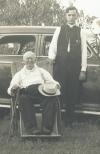
In the 1920s The Guardian, the weekly newspaper under the leadership of Father George McDermott, was challenging to read by today's standards. Very rarely did a news photograph appear in the eight broadsheet pages each week. Articles from the new National Catholic Welfare Conference News Service on national and international affairs would often be mixed with local articles.
Some issues were dedicated to certain institutions in the state. A 64-page to 72-page newspaper was published More... 

With the end of the war, The Guardian entered into a celebratory and more hopeful time, continuing to publish an eight-page broadsheet paper weekly with editor-in-chief Father Augustine Stocker, OSB., who continued to serve as Subiaco prior.
In The Guardian 1920-1922 Click hereThe pope’s work for peace continued to be explored in the paper. His reconciliation encyclical ran in the July 3, 1920, issue: "Benedict XV makes momentous declarations on world peace and means More... 
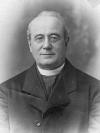
The Guardian ushered in the years of 1917-1919 still publishing eight broadsheet pages a week under the editorial guidance of Subiaco prior Father Augustine Stocker, OSB.
The first issue of 1917 announced the news of the death Father Pietro "Peter" Bandini, pastor of St. Joseph Church in Tontitown, who died three days earlier after "a brief illness." Father Bandini came to Arkansas leading a group of Italian immigrants from New York who started a colony in More... 
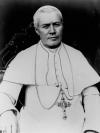
The Southern Guardian continued as a weekly eight-page broadsheet newspaper during the years of 1914-1916 under the supervision of Father Augustine Stocker, OSB, who worked out of Subiaco Abbey in Logan County.
During this time, the paper became merely The Guardian. "Southern" was gone from the paper's name with a brief editorial note reflecting on the name change.
In the news 1914-1916 Click here With the new name also came a fancier look for More... 

First in 33-part series on history mined from the first 100 years of Arkansas Catholic and its predecessors.
The Southern Guardian debuted as an eight-page broadsheet newspaper on Saturday, March 25, 1911, under the leadership of editor Msgr. J.M. Lucey.
Msgr. Lucey served as editor for six months until passing the editor's hat to Father Augustine Stocker, OSB. The Benedictine priest from Subiaco Abbey served as editor for the remainder of the issues for 1911-1913. Msgr. Lucey, More... 
 Winning directory photo honors Our Lady of Guadalupe
Winning directory photo honors Our Lady of Guadalupe
 St. Paul says: How does the Bible define love?
St. Paul says: How does the Bible define love?
 6 steps to getting married in Diocese of Little Rock
6 steps to getting married in Diocese of Little Rock
 Most frequently asked questions on Catholic marriage
Most frequently asked questions on Catholic marriage